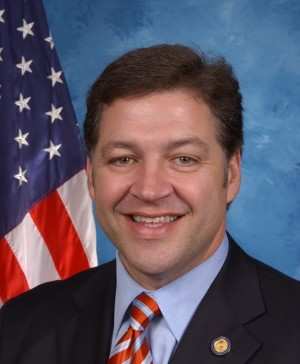Fri, Apr 11, 2014
Bill Intended To Restore Transparency Of Airfare Taxes On Tickets
The U.S. House Transportation and Infrastructure Committee on Wednesday passed The Transparent Airfares Act of 2014, a bill designed to ensuring airline customers are aware of exactly how much of their ticket price goes to federal taxes and still know the full price of travel before they purchase.

The bipartisan legislation introduced by Chairman Bill Shuster (R-PA) (pictured) and Representative Peter DeFazio (D-OR), would end the ability for the government to bury ticket tax hikes in advertised prices by reversing the Department of Transportation’s (DOT) misguided Full Fare Advertising (FFA) Rule. The DOT fundamentally changed U.S. airline price advertising practices in 2012 when it imposed the FFA rule requiring that federal taxes and fees be included in the base price of an advertised fare. This reduces transparency and treats airfare advertising differently than advertising for virtually all other consumer products, rendering air travel less price competitive when compared with other modes of travel.
The committee's action was praised by airline industry trade organization Airlines for America (A4A). “Air travel remains one of the best bargains for consumers, but that affordability is imperiled by rising government taxes and fees,” said A4A President and CEO Nicholas E. Calio. “We thank Chairman Shuster and Representative DeFazio for their leadership in promoting government transparency, protecting customers and holding Washington accountable for the taxes they impose on air travel.”

Calio noted that commercial aviation, which helps support more than 10 million jobs, is already shouldering an excessive tax burden that has increased nearly thirtyfold since 1972. The 17 different taxes and fees imposed on aviation and its customers totaled more than $19 billion last year alone. On a typical $300 roundtrip domestic ticket, customers pay $61 in federal taxes, or 20 percent of the ticket price. That number will increase to $63, or 21 percent, in July when the TSA passenger security tax more than doubles – from $2.50 to $5.60, costing passengers more than $1 billion annually.
More News
LinxUs System Adds Capabilities for Data-Driven Operators Textron Aviation announced another option for operators processing their post-flight data, adding interoperability with GE>[...]
Aero Linx: The de Havilland Moth Club Ltd The de Havilland Moth Club evolved from a belief that an association of owners and operators of Moth aeroplanes should be formed to create>[...]
(Pilot) Inadvertently Applied Excessive Braking Action, And The Airplane Nosed Over Analysis: The pilot reported that, while landing at a remote, rough and uneven airstrip in a tai>[...]
“MCADT is committed to rapidly integrating armed first-person view drones into the FMF, enhancing small-unit lethality and providing organic capabilities that warfighters cur>[...]
From 2017 (YouTube Edition): Major Engine Supplier Joins Forces With Small Aircraft Manufacturer… GE recently made an agreement with Venom Aircraft to supply engines for the>[...]
 Citation Operators Get Another Flight Data Connection for QA
Citation Operators Get Another Flight Data Connection for QA ANN's Daily Aero-Linx (06.01.25)
ANN's Daily Aero-Linx (06.01.25) NTSB Final Report: Bellanca 8GCBC
NTSB Final Report: Bellanca 8GCBC Aero-News: Quote of the Day (06.01.25)
Aero-News: Quote of the Day (06.01.25) Classic Aero-TV: High-Speed Match-up - Venom and GE Rebirth A Legend
Classic Aero-TV: High-Speed Match-up - Venom and GE Rebirth A Legend




